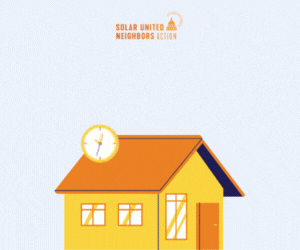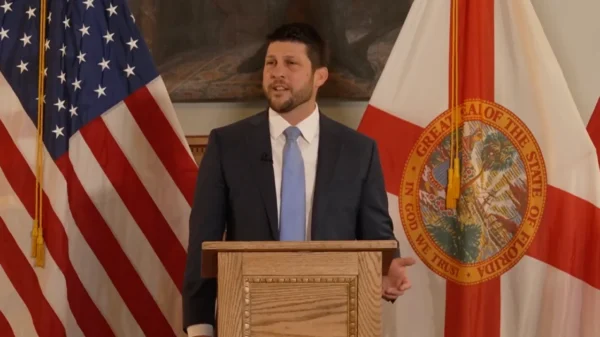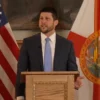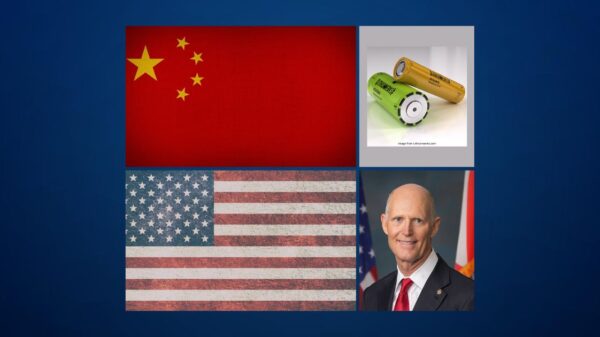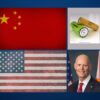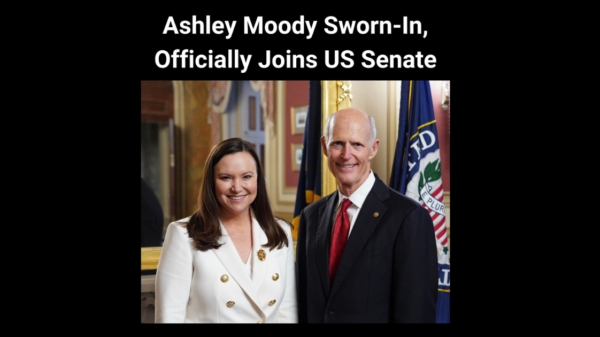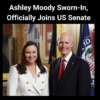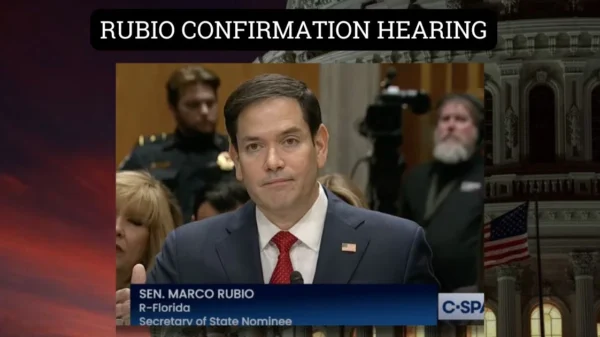On Wednesday, U.S. Sen. Marco Rubio, the chairman of the U.S. Senate Small Business and Entrepreneurship Committee, convened a hearing titled, “Implementation of Title I of the CARES Act.”
Rubio’s opening remarks as prepared can be found below.
Rubio: “I would like to thank everyone for joining us, both in person and virtually, and welcome Secretary Mnuchin and Administrator Carranza.
“Thank you both for being here.
“This hearing is our first opportunity to have Secretary Mnuchin and Administrator Carranza testify since the enactment of the CARES Act.
“The CARES Act is a landmark piece of legislation.
“In less than two weeks, Congress passed the largest economic relief package in our nation’s history.
“Now, after the passage of two further reforms, the Paycheck Protection Program is the largest component of the economic relief enacted by the CARES Act.
“It has been up to the administration, particularly Secretary Mnuchin and Administrator Carranza, to execute and administer PPP.
“This has been no small task. And though there have been bumps along the road, overall the Paycheck Protection Program has been a clear success.
“The Paycheck Protection Program saved millions of jobs and small businesses during the most uncertain economic situation this nation has faced since the Great Depression.
“It took a new approach to economic policy.
“As the CARES Act was being negotiated, businesses were faced with the prospect of laying off their workers — not because of a weakness in their business model or the downturn of an economic cycle, but because of a government-imposed shutdown.
“With no work available to be done, pure economic logic said that the most efficient thing to do is to lay off workers until more normal conditions were restored.
“But we knew that the most efficient outcome was not the best outcome for the common good.
“During the negotiation of the CARES Act, I learned an entire family—a family I have known for years—lost their jobs within 72 hours. The mom. The dad. Their two adult kids. And the kids’ spouses.
“That kind of uncertainty is devastating.
“And it is not something that temporary replacement income alone can solve.
“The situation was also bad for businesses.
“Workers are not disposable inputs that can be discarded during tough times, but integral members of the business.
“I have heard from countless small businesses of the anguish they felt over the prospect of laying off employees who had worked for them for years, or who they knew needed their job to make ends meet.
“What small businesses needed was not just cheaper debt they could take out against their future earnings, but a real lifeline.
“And what the economy needed was not just government checks to lessen the pain of layoffs, but to reduce layoffs altogether and preserve the connective tissue of a well-running economy.
“That is why we enacted the Paycheck Protection Program.
“Instead of a traditional loan, small businesses would have whatever costs they spent on the survival of the business forgiven as long as they kept their workers on payroll.
“As nationwide lockdowns shut down the American economy, we had two main priorities: size, and speed. And I am proud that both of those goals were met.
“The scope of the lockdown meant we needed sizable relief.
“Appropriated funds for the Paycheck Protection Program are now at $670 billion.
“The PPP is larger than any other program enacted by the CARES Act or the 2008 stimulus bill — by some estimates, the largest jobs program since the New Deal.
“The speed of the lockdown meant we needed to get funds to small businesses with urgency. The CARES Act was signed into law on March 27.
“Exactly one week later, thanks to the tireless work of Secretary Mnuchin, Administrator Carranza, and their staffs, the Paycheck Protection Program began approving loans to small businesses.
“Small businesses received PPP funds before millions of Americans received tax refunds or unemployment checks. And other lending programs run through the Federal Reserve are only just now beginning to operate.
“The achievement of these priorities, of course, came at the expense of others.
“Some companies who should not have received PPP loans received them, though many have since returned them.
“Computer systems were strained under unprecedented levels of activity. Guidance released to solve some problems created others.
“But I want to be clear: these bumps in the road were and are the price of a successful program.
“Economists and financial forecasters predicted last month that May 2020 would be the worst month for job losses during the duration of the pandemic.
“It was expected that nearly 8 million more Americans would lose their jobs in May.
“They predicted that unemployment would top 20 percent.
“Some even speculated that it might end up surpassing the Great Depression’s estimated rate of 24 percent.
“What would that have looked like?
“It would have bankrupted the central promise of economic opportunity in our nation. Without PPP’s temporary lifeline, tens of millions of Americans would have been permanently separated from their livelihoods and stripped of dignified work.
“Many would be condemned to poverty, some over generations.
“Parents would be unable to provide for their families, tied indefinitely to the government for assistance.
“Without PPP, we risked the extinction of small business as we know it.
“Countless blocks of urban and suburban America would have been hollowed out, vast expanses of empty lots where brick-and-mortar stores once sustained communities.
“But this didn’t come to pass.
“Instead, to forecasters’ surprise, last month 2.5 million Americans got their jobs back.
“The over $500 billion in Paycheck Protection Program funds disbursed through April and May enabled small businesses to keep or re-hire their workers.
“4.5 million businesses have received loans equal to over $500 billion.
“This is equal to about 50 million jobs protected.
“The average loan size is $112,000, an amount that based on eligibility criteria makes the average business receiving PPP loans one with about 10 employees.
“A recent survey by the National Federation of Independent Business noted that 77 percent of surveyed small business owners had applied for a PPP loan, of which 93 percent had received funding.
“As of June 6th, there are currently 424 Community Development Financial Institutions (CDFIs) and Minority Depository Institutions (MDIs) in the program that have accounted for more than 190,000 loans valued at more than $15.8 billion.
“The SBA and Treasury have also set aside $10 billion in PPP funds for CDFIs to lend.
“This is the record of a successful program. I thank Secretary Mnuchin and Administrator Carranza for their work implementing it.
“I would also like to comment on the Economic Injury Disaster Loan (EIDL) program.
“The SBA, for the first time in its history, administered a nation-wide disaster and grant advance program through an expanded version of the existing Economic Injury Disaster Loan (EIDL)—offering direct government lending and grants to eligible entities suffering economic injury due to COVID-19.
“To date, nationwide, the SBA has approved more than 1.13 million COVID-19 EIDL loans totaling more than $79.9 billion; and 3.1 million Emergency EIDL Advances totaling $10.2 billion.
“The EIDL program has realized numerous challenges—both previously in responding to regional disasters, and currently for COVID-19 disruptions.
“In drafting the CARES Act, I raised concerns with the deficiencies of the existing EIDL program as a whole, which only accounts for roughly 2 percent of the disaster loans made by SBA.
“In particular, I was concerned that it would be challenging for the agency to handle a disaster of this magnitude.
“As such, the concept of using traditional lenders, instead of direct government loans, to ensure capital was reaching the hands of small businesses as fast as possible, was born through PPP.
“While I commend the agency for standing up the EIDL program nationwide to respond to an unprecedented volume of applications within a short period of time, today, unfortunately, we see similar and new EIDL challenges for borrowers—including long processing and disbursement timelines and communications issues.
“As many businesses are also relying on assistance through EIDL to rebuild after the economic disruptions caused by this pandemic, we look forward to the agency addressing the current EIDL challenges and how Congress may work to support the agency in making improvement going forward.
“Today is an oversight hearing.
“There are many issues that myself and members of this committee would like to raise to help keep this program running smoothly, especially as some businesses approach filing for loan forgiveness this month.
“But we should begin by putting these issues in perspective and recognizing the choices that Congress and the administration made to make this program succeed.”




